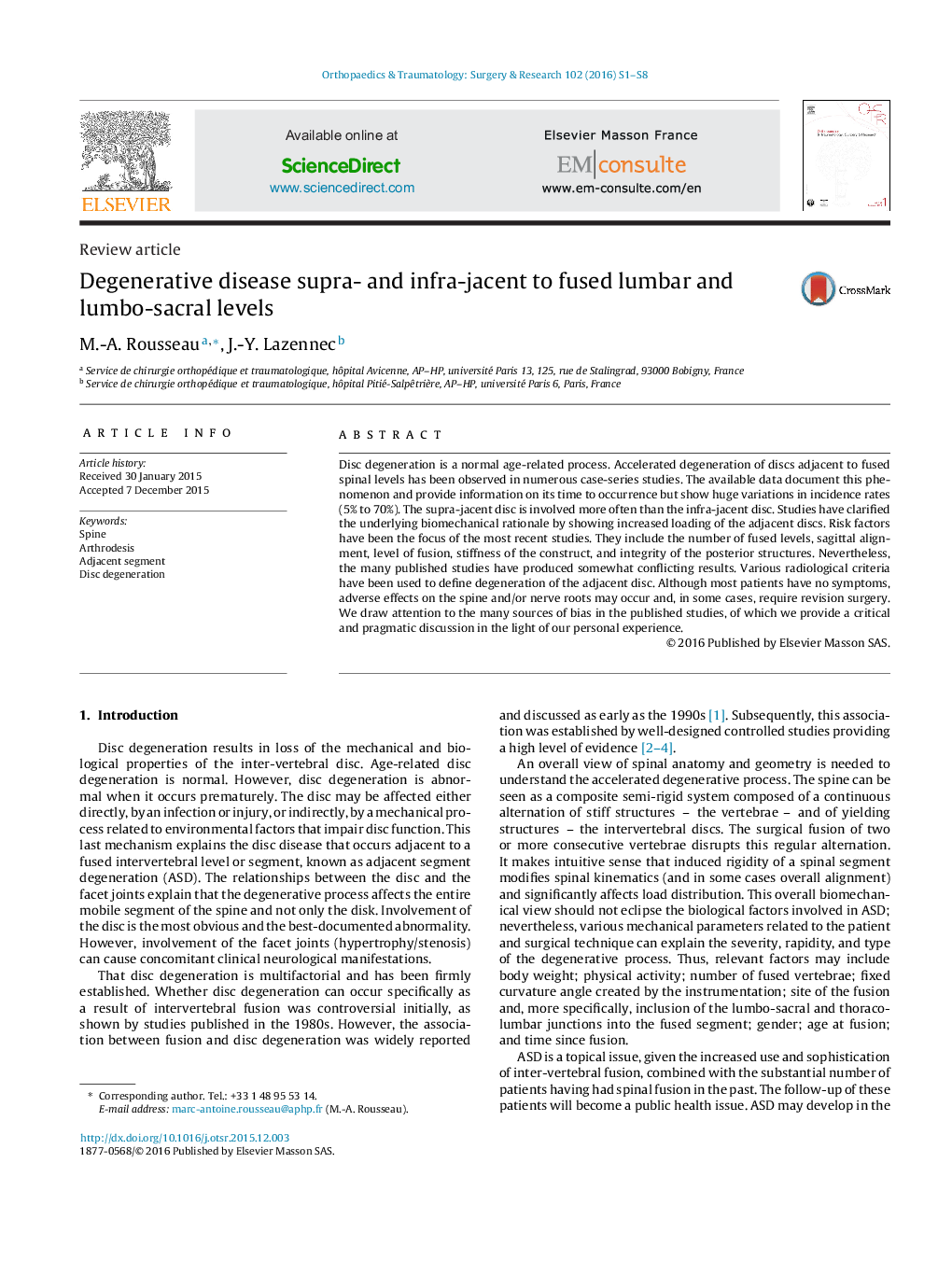| Article ID | Journal | Published Year | Pages | File Type |
|---|---|---|---|---|
| 4080755 | Orthopaedics & Traumatology: Surgery & Research | 2016 | 8 Pages |
Disc degeneration is a normal age-related process. Accelerated degeneration of discs adjacent to fused spinal levels has been observed in numerous case-series studies. The available data document this phenomenon and provide information on its time to occurrence but show huge variations in incidence rates (5% to 70%). The supra-jacent disc is involved more often than the infra-jacent disc. Studies have clarified the underlying biomechanical rationale by showing increased loading of the adjacent discs. Risk factors have been the focus of the most recent studies. They include the number of fused levels, sagittal alignment, level of fusion, stiffness of the construct, and integrity of the posterior structures. Nevertheless, the many published studies have produced somewhat conflicting results. Various radiological criteria have been used to define degeneration of the adjacent disc. Although most patients have no symptoms, adverse effects on the spine and/or nerve roots may occur and, in some cases, require revision surgery. We draw attention to the many sources of bias in the published studies, of which we provide a critical and pragmatic discussion in the light of our personal experience.
